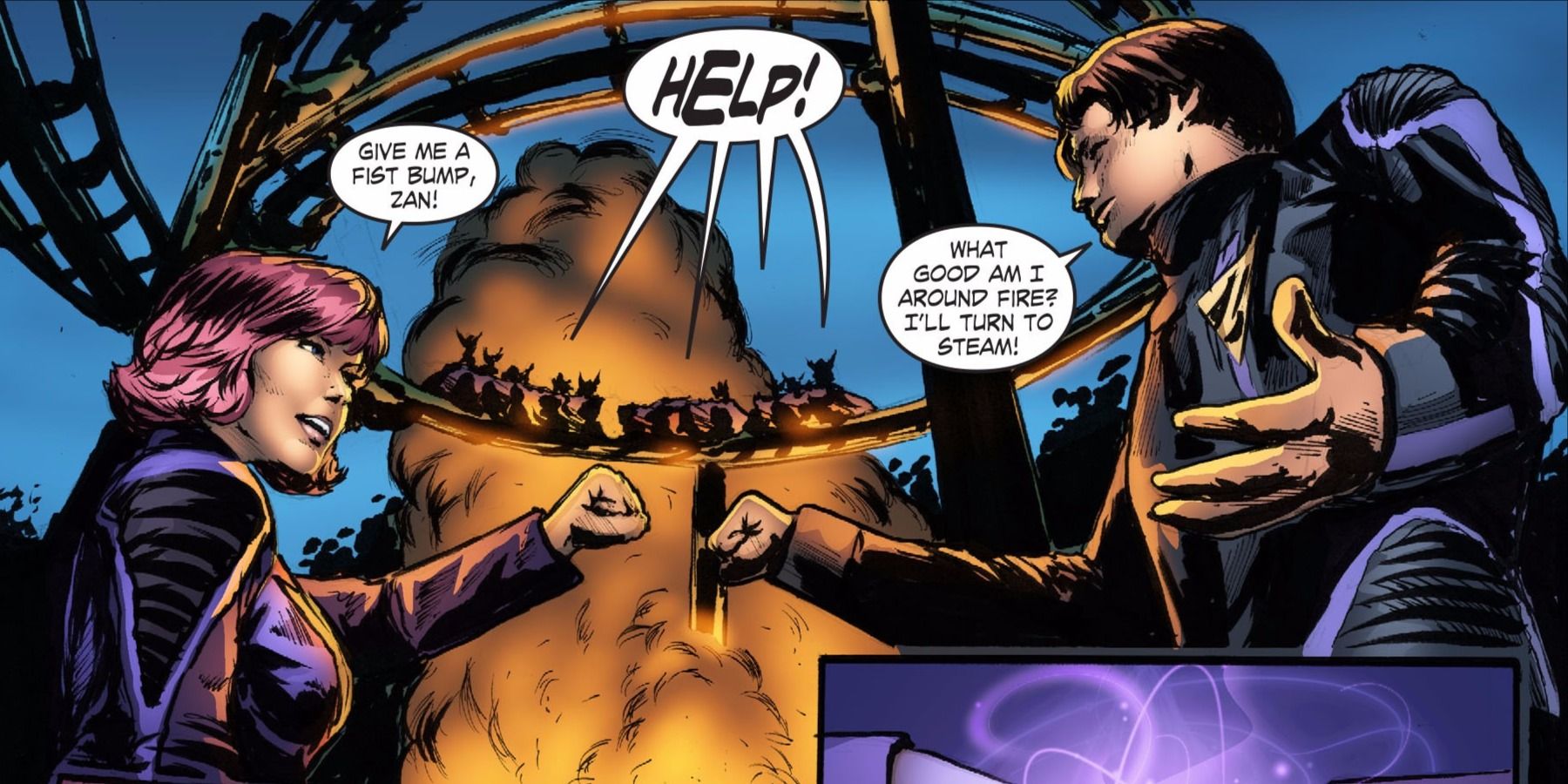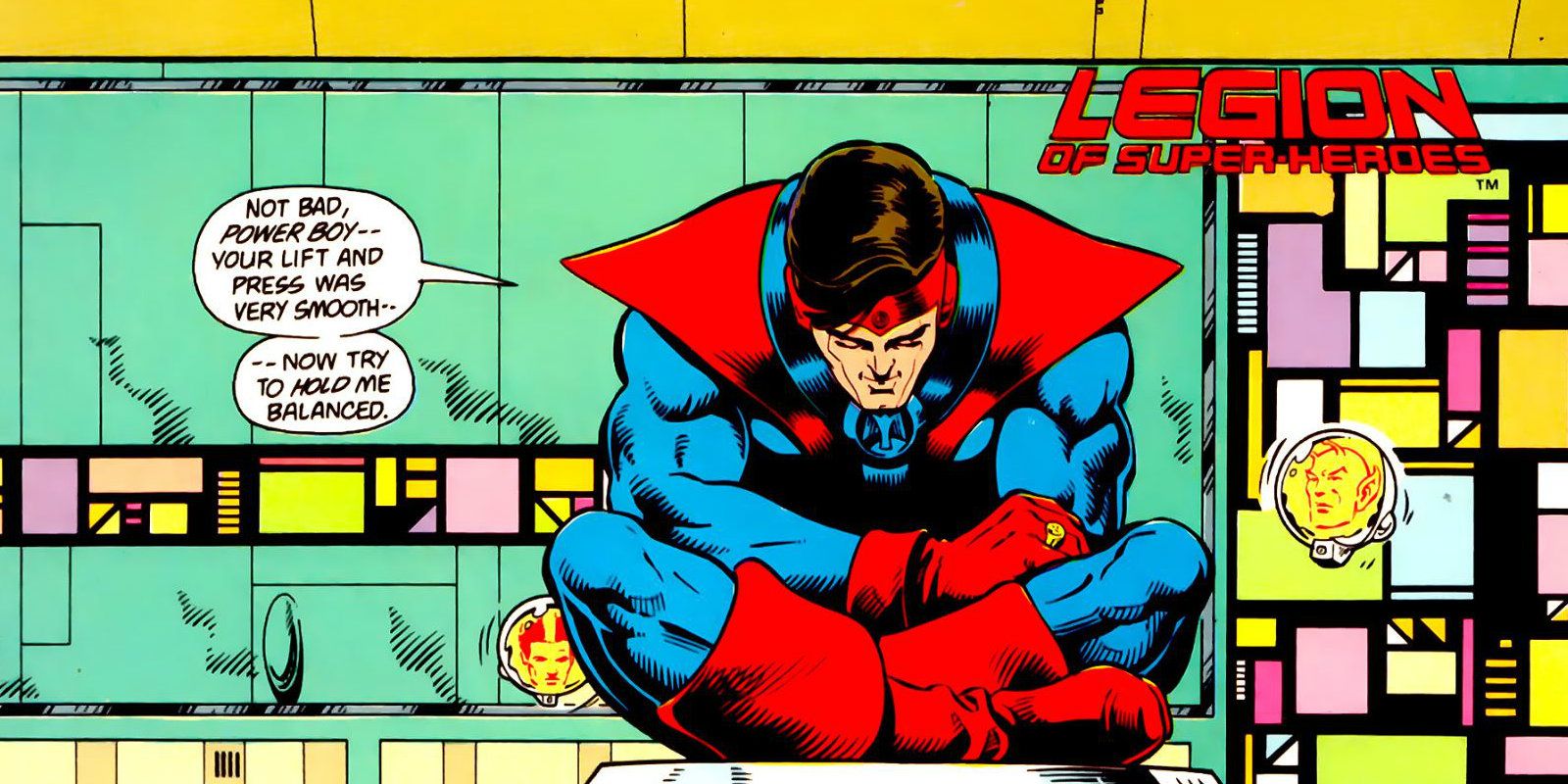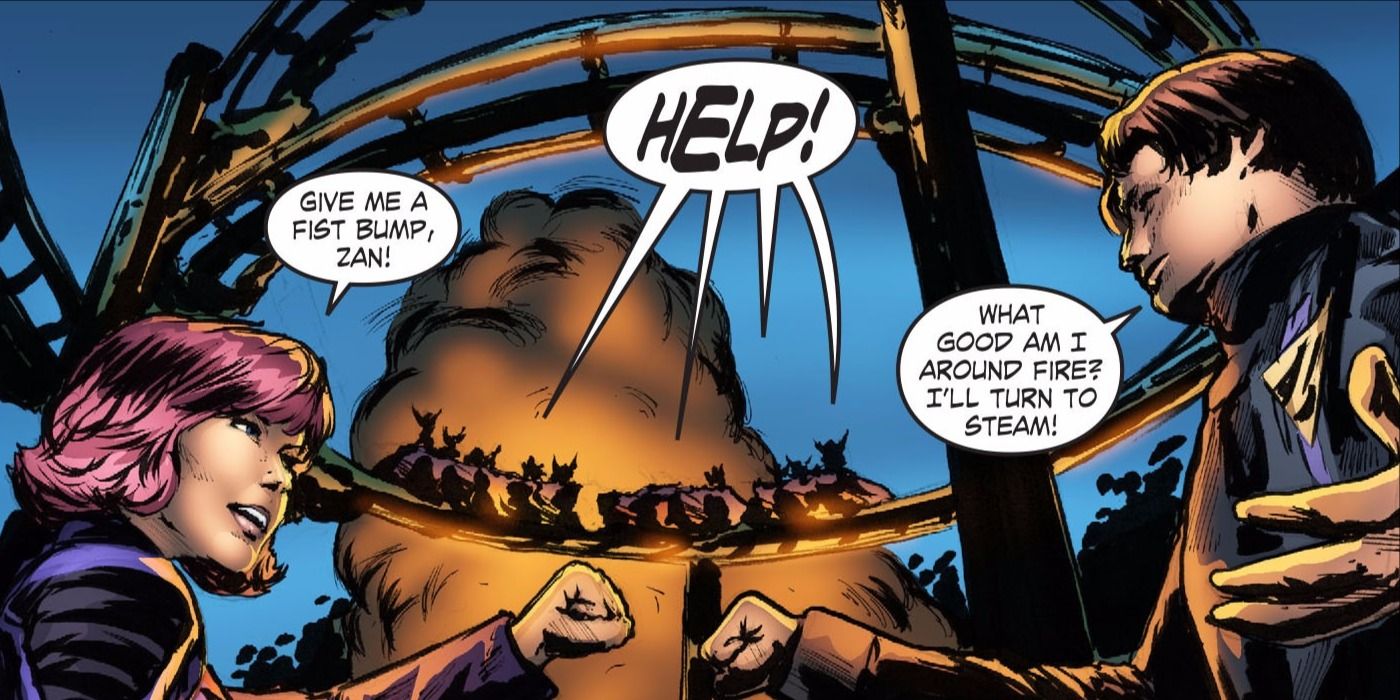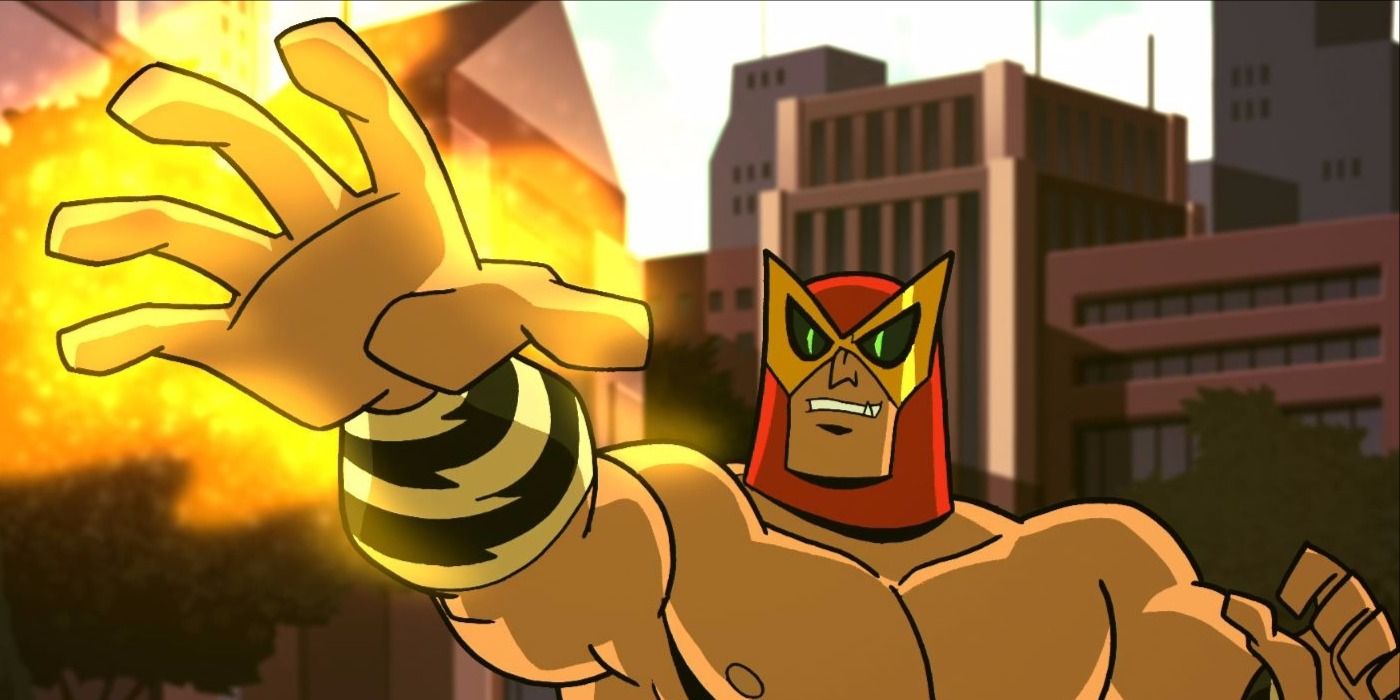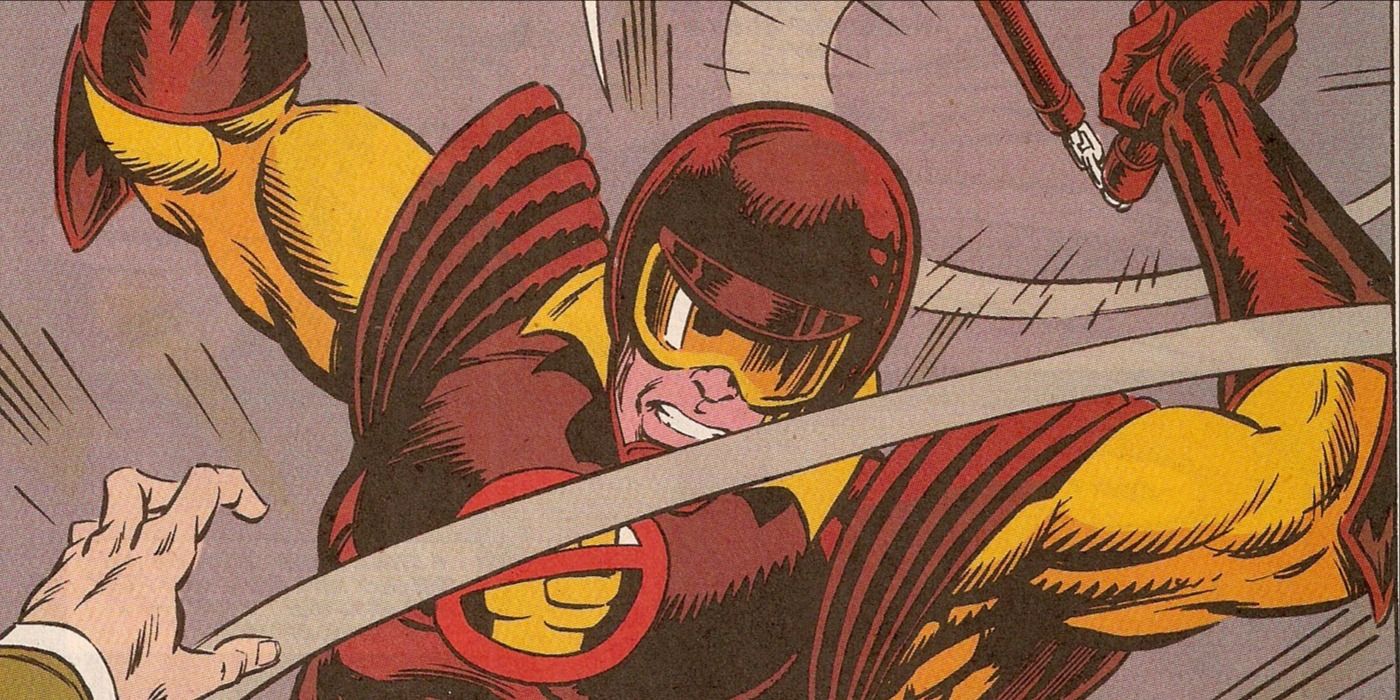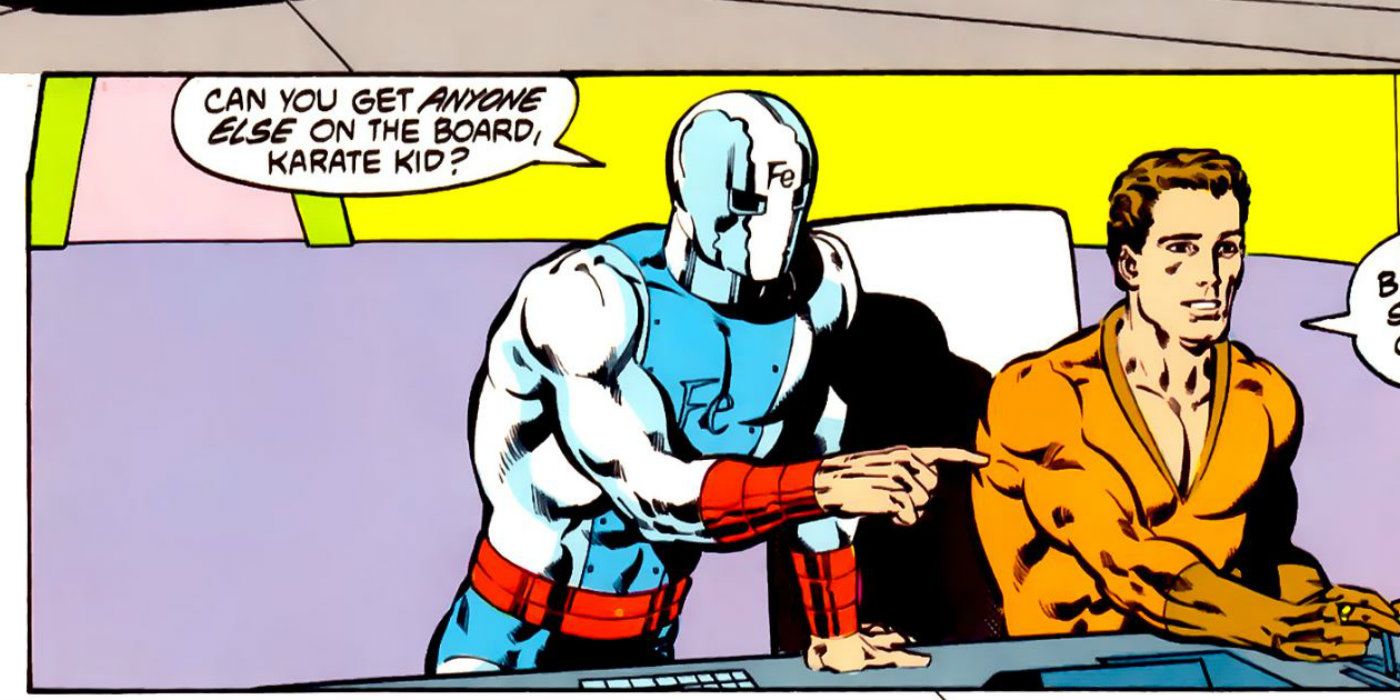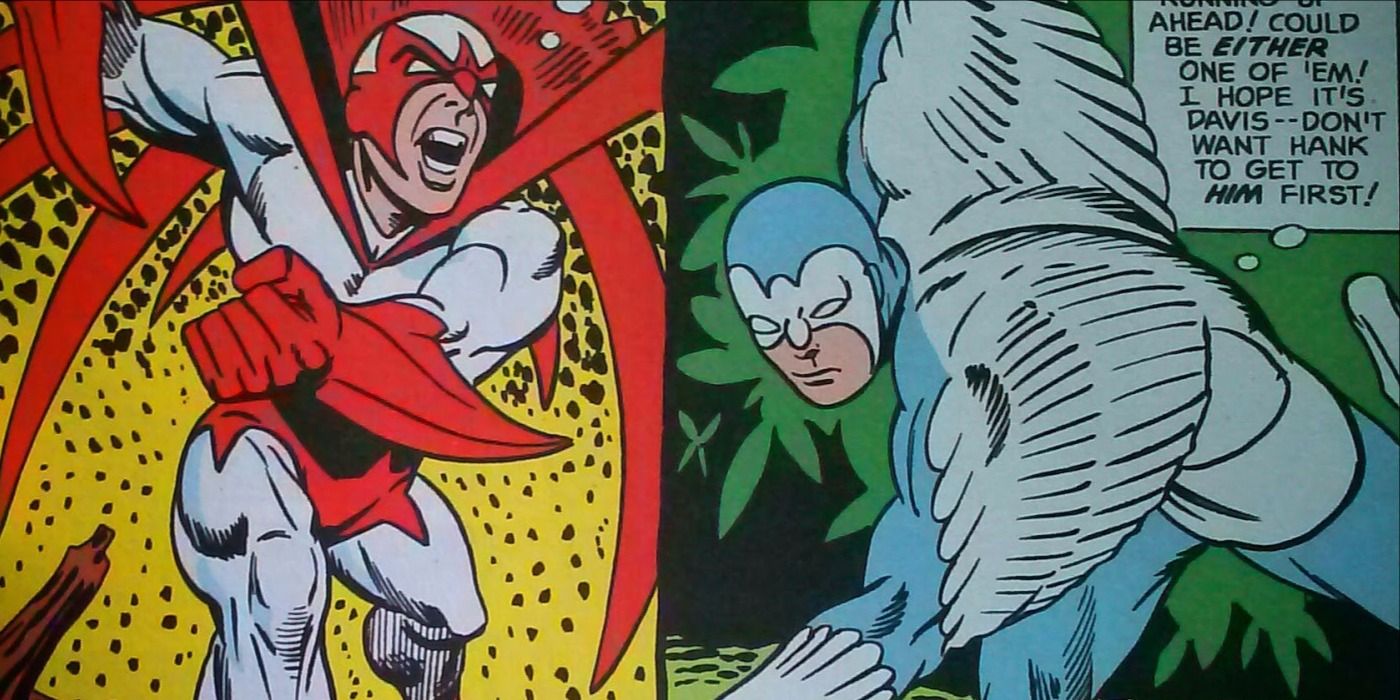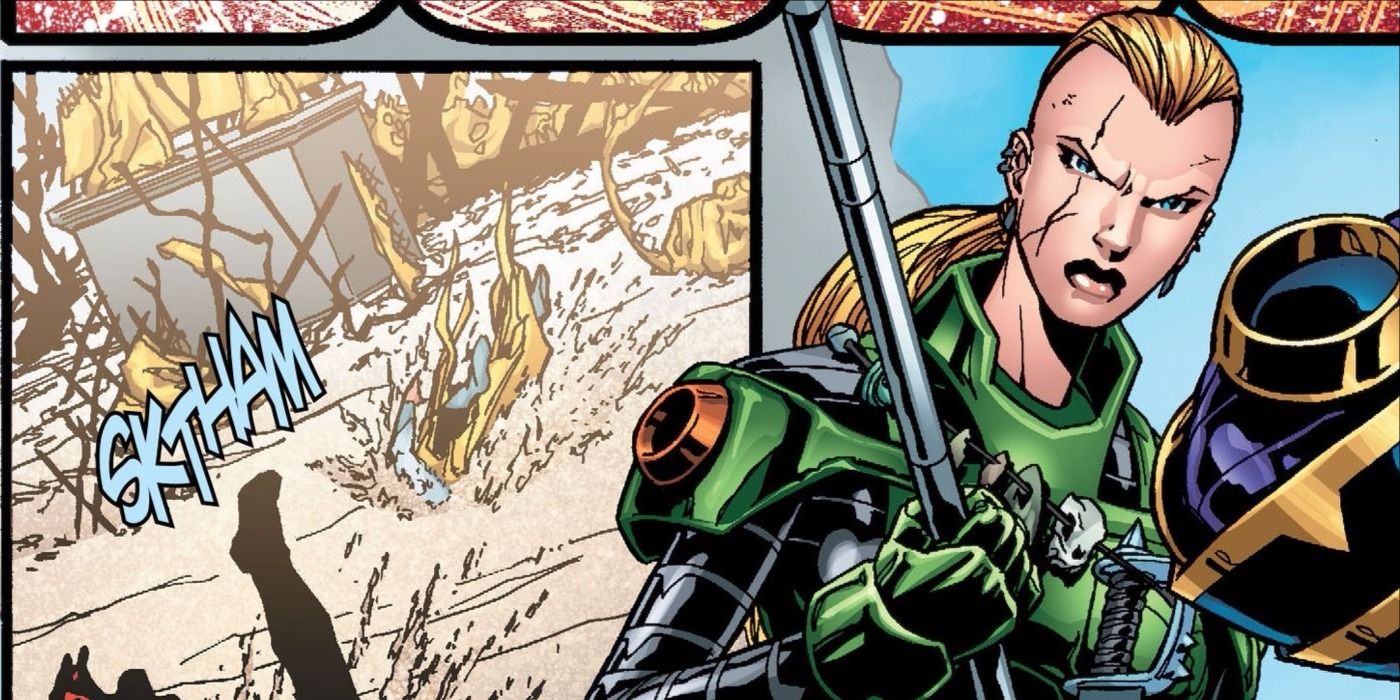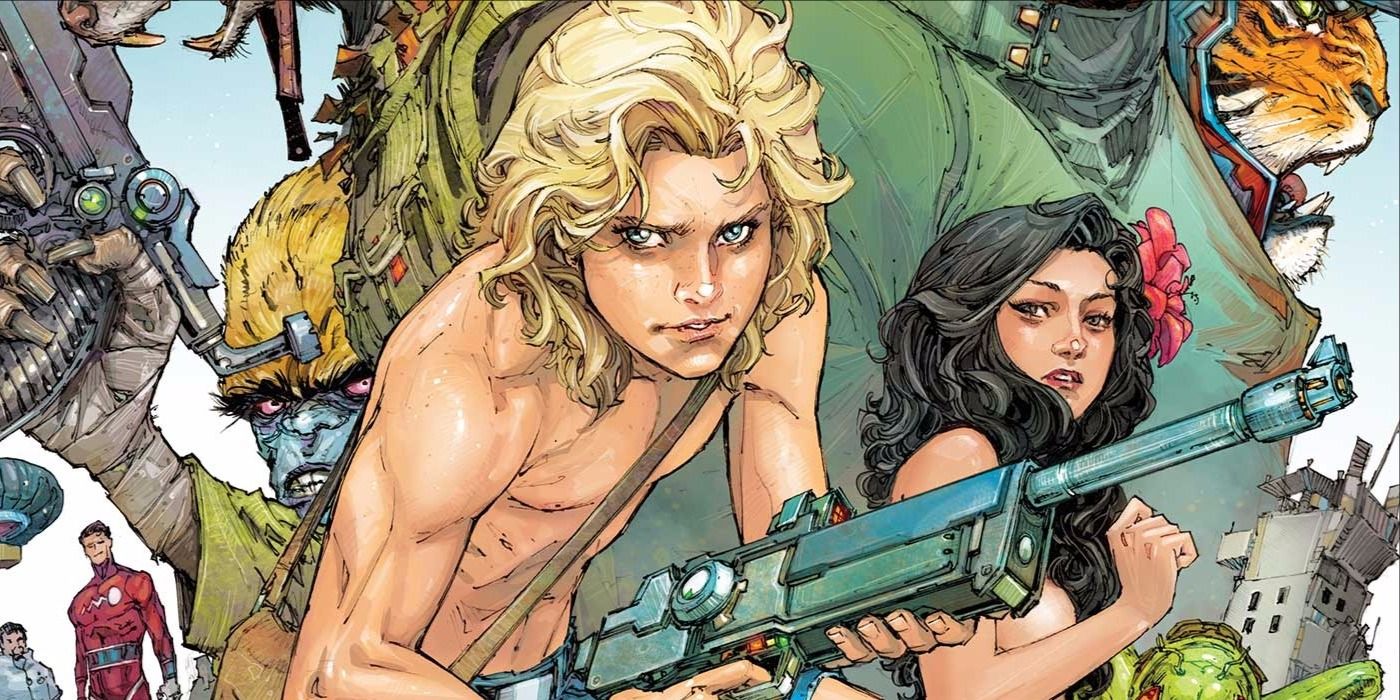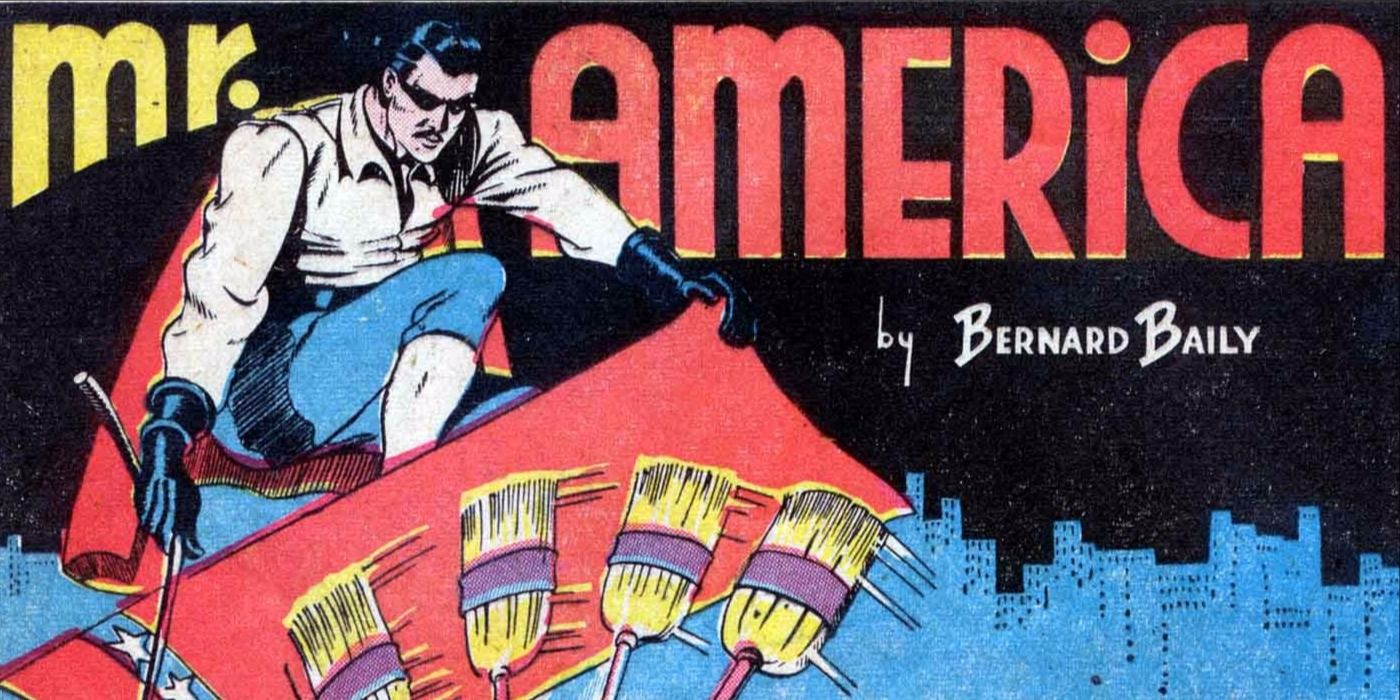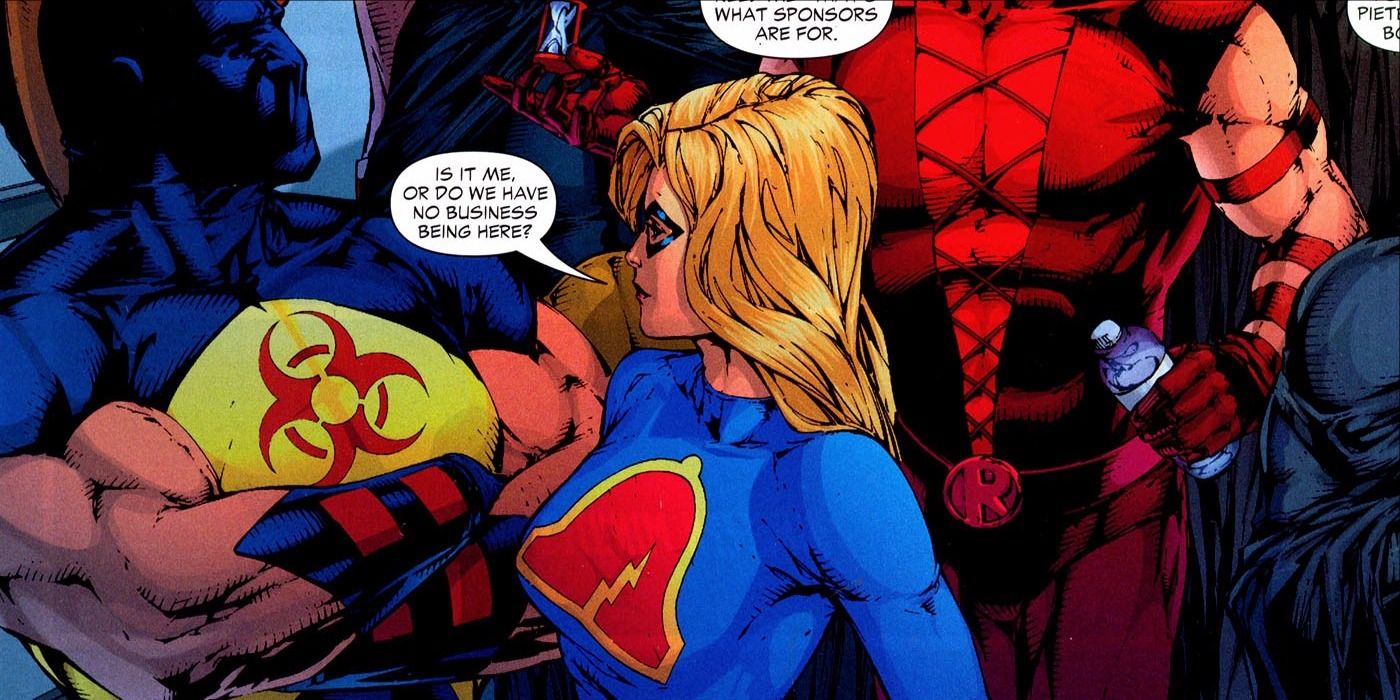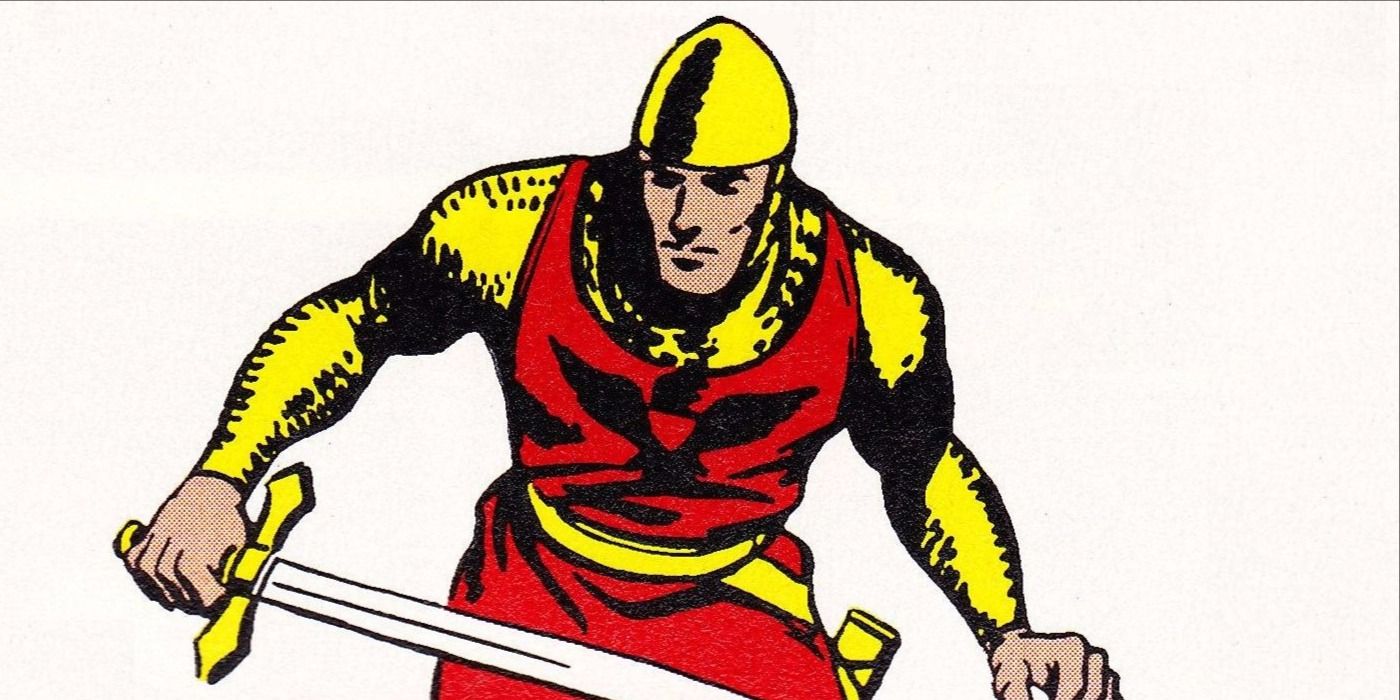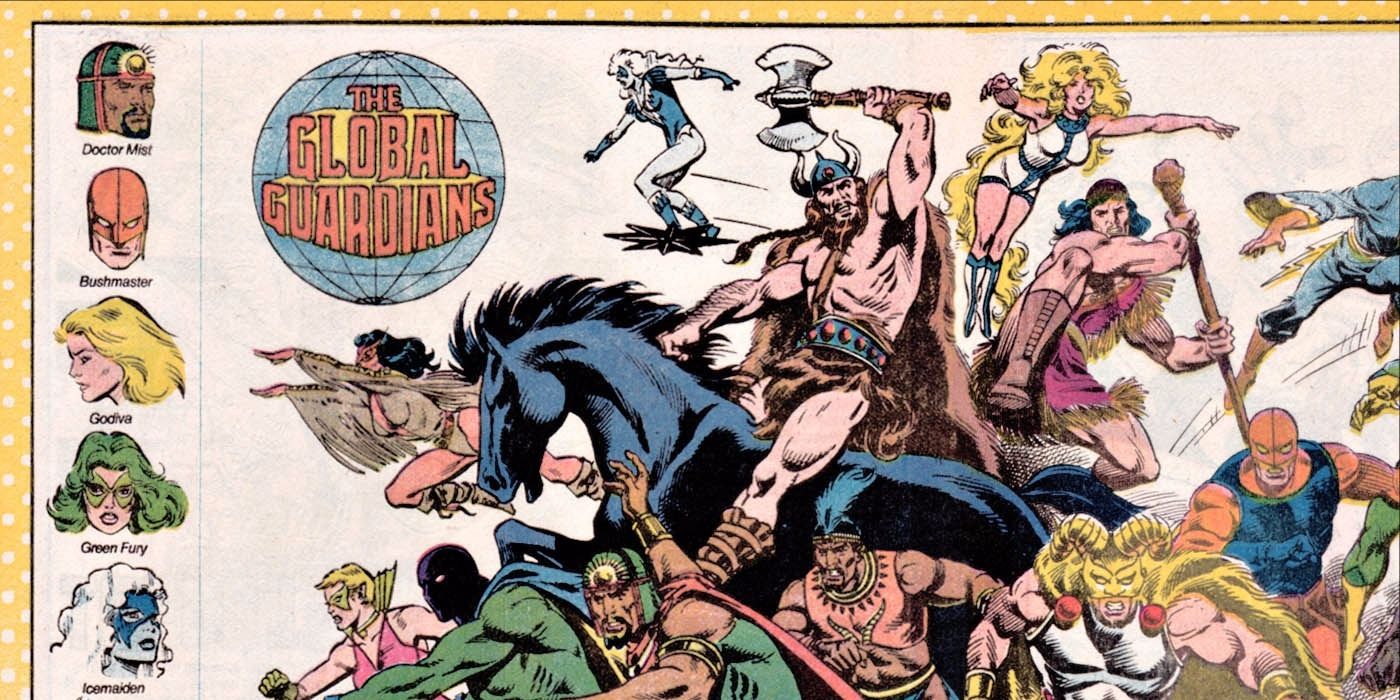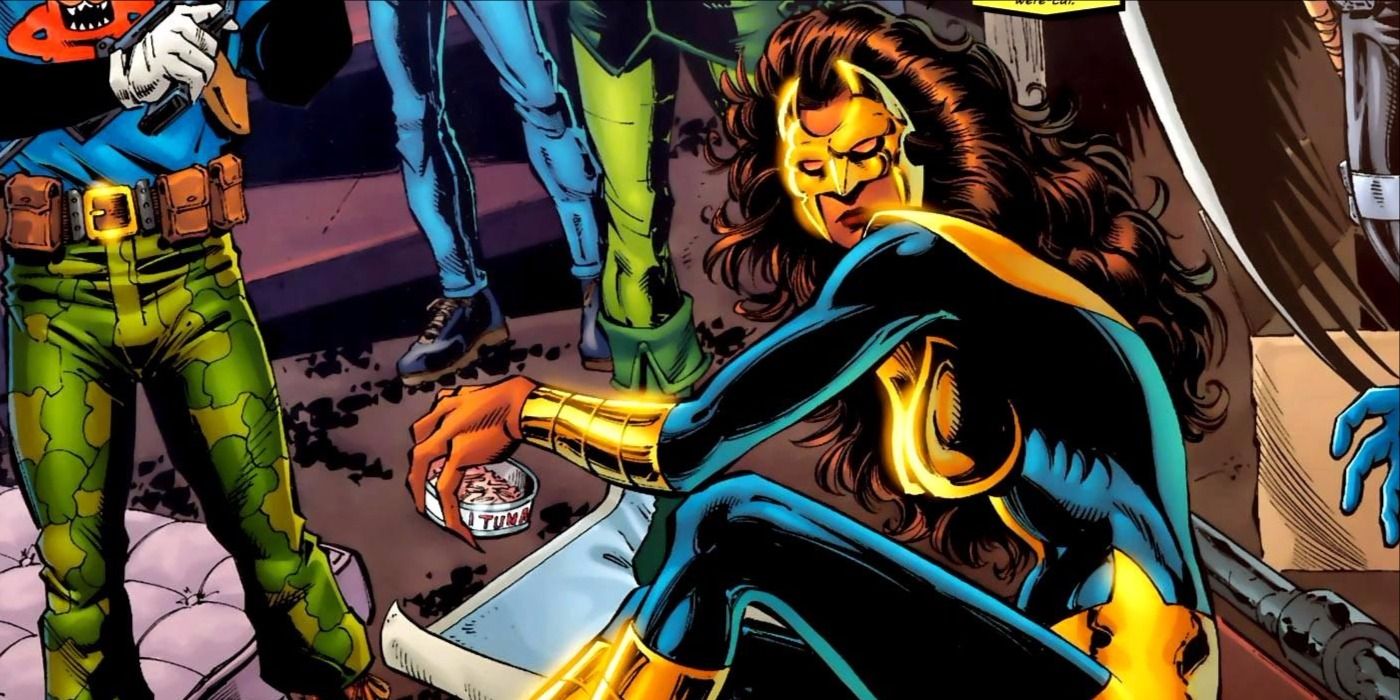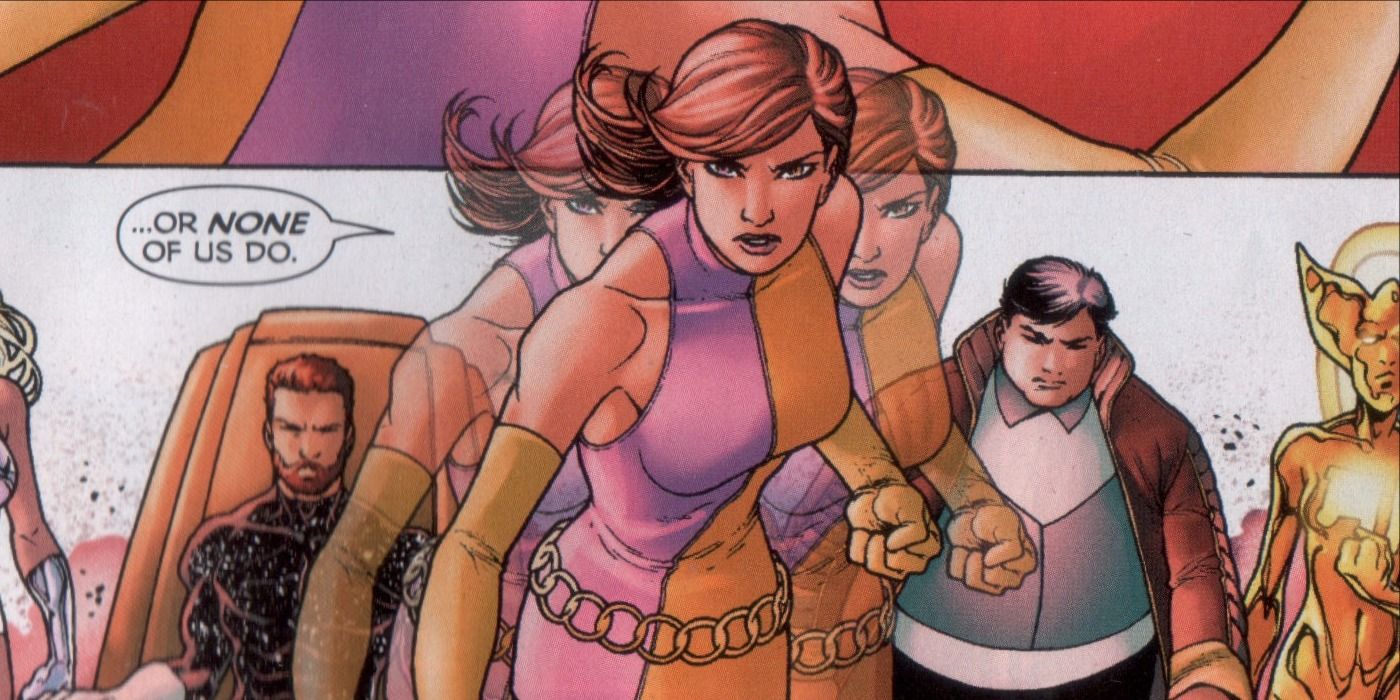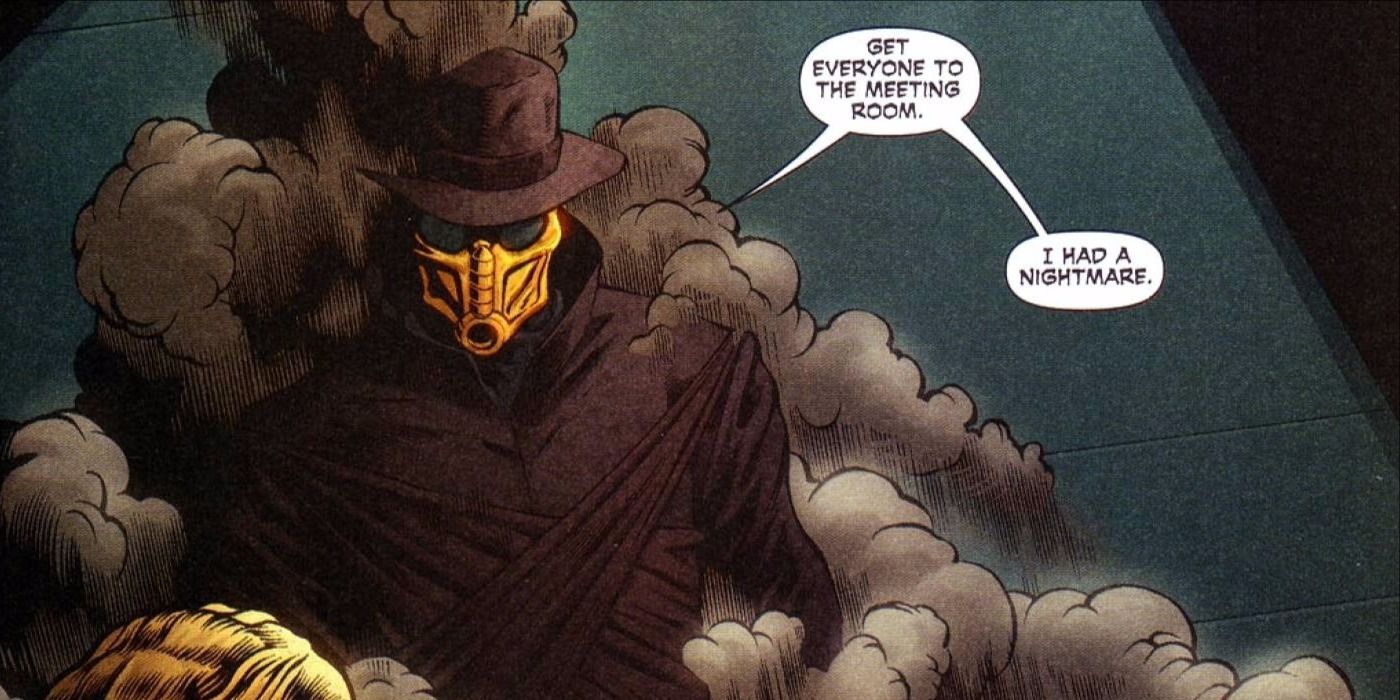In the many years during which superheroes have been beloved, there are a few superheroes who have been relegated to the pages of a comic book and have gotten little love on the screen. The mass audiences have a tolerance for a talking tree and his rocket-packing, racoon best friend but sometimes there are heroes too goofy, obscure or un-flashy enough for the movies. Also the costumes often suffer from the decade in which they were designed, which isn't doing them any favors.
RELATED: 15 DC Villains You Will Never See In The Movies
However, that doesn't mean that there aren't some saving graces to the heroes who will be passed by studio executives. Sometimes it's better to keep those characters close in the comics, with the understanding that they will never hit the screen. Here. then, are 15 DC superheroes who won't make it to a theater near you.
15 COLOSSAL BOY
Colossal Boy, aka Gim Allon, first appeared in "Action Comics" #267 and created by Jerry Siegel and Jim Mooney. In that version, Supergirl travelled to the Metropolis of the 30th century, and met the Legion of Super-Heroes, of which Colossal Boy was a part. Each member got their powers genetically, but in another 1994 reboot written by Mark Waid and Tom McCraw, he was a Science Police officer who was grazed with a meteorite.
In any case, his powers allowed him to grow to a gigantic size and maintain super-strength in proportion to his size. He tends to have an on-again-off-again crush on his teammate Shrinking Violet, and depending on who's writing the story (and whether or not she's secretly a shapeshifter), it may or not be returned. It's unlikely that Gim will ever show up on the big screen, unless Legion of Super-Heroes gets a lot of unprecedented attention by producers.
14 WONDER TWINS
Zan and Jayna, aka the Wonder Twins, have been the butt of many pop culture jokes, and probably the first two superheroes who actually debuted on TV rather than in the pages of a comic book. They were the first characters created by Norman Maurer for "The All New Super-Friends Hour," debuting in the episode "Joyride" in 1977. They had a few tie-in comics, but they were introduced into the main DC universe in "Extreme Justice" #9, written by Ivan Velez Jr and released in 1995.
"Extreme Justice" rewrote the Wonder Twins' origin story as alien refugees. Zan has the ability to turn into any type of water-based creature and Jayna can transform into any type of animal. When they were stranded on Earth, they were attacked by locals who couldn't understand their alien language. Eventually, they were adopted into the Justice League once everything settled down. The Wonder Twins are unlikely to be taken seriously enough for the length of a feature film, but who knows? Maybe the Spock look will be "in" again soon.
13 B'WANA BEAST
Oh boy, that mask is reason alone to never be seen in the movie theater. B'wana Beast was created by Bob Hanley for "Showcase" #66 in 1967. He started out as Ranger Mike Maxwell, who was flying helicopters in the Zambesi Game Preserve. Then, it is suddenly revealed that he turns into the mighty B'wana Beast from drinking a serum and putting on his helmet, which was given to him by his gorilla friend Djuba. His powers include the actual genre of body-horror, as he can combine two separate animals into a chimera over which he has total mind control.
He spends most of his time in Africa, fighting the immortal Hamid Ali and trying to rescue Djuba from evil American scientists. Unfortunately, he didn't last long before deciding to retire in the series "Animal Man" written by Grant Morrison. However, since he's already been made fun of on "Teen Titans Go" for being a discount Beast Boy, B'wana Beast probably won't be fusing animals anytime soon.
12 GANGBUSTER
Jose Delgado was introduced in "Adventures of Superman" #428, but his alter-ego Gangbuster didn't show up until #434 in 1987, and created by Marv Wolfman. Jose grew in Metropolis' Suicide Slums, and was a boxer before he became a teacher. That was what made him pick up Gangbuster's mask in the first place. When Lex Luthor decided to add youth gangs to Metropolis' organized crime problems, Jose decided to do something about it with his fists.
He worked as a bodyguard for Cat Grant for a while as Jose Delgado, but Jose has a history having trouble holding down jobs. Jose doesn't have any superpowers, but after a devastating spinal cord injury, he accepted Lex Luthor's offer of cybernetic implants that would allow him to walk again. He also worked with Black Lightning for a while in "Black Lightning" #7, trying to bring down a Gangbuster imposter who was using much more violent methods. Gangbuster probably isn't well-known enough to get his own movie and probably wouldn't stack up particularly well against the super-powered heroes of the Justice League on the big screen... especially with that logo.
11 FERRO LAD
Andrew Nolan has the ability to turn into iron, but it's doubtful that an iron-clad contract will be written to get him into the movies. Ferro Lad first showed up in 1966's "Adventure Comics" #346, and created by Jim Shooter. He was another Legion of Super-Heroes member from the 30th century, and had a twin brother named Douglas with the same power. Unfortunately, their metahuman abilities came with a deformity of the face, so both wore masks in order to hide them. This Silver Age version of Ferro Lad was killed off pretty quickly, but not because he was deemed unworthy of continuation. Jim Shooter originally wanted to make Ferro Lad African-American, but was prevented from doing so because then-editor Mort Weisinger thought it would hurt their distribution in the South.
Another version of Andrew and Douglas Nolan showed up post "Zero Hour," but this version of the pair were from the 20th century and were the sons of a famous actress. However, given that the deformity would force an actor to wear a mask for the entirety of their performance, Ferro Lad won't be showing up in a Justice League or Justice Society of America movie soon.
10 HAWK AND DOVE
Hawk and Dove are the second set of superhero partners on this list, but unlike the Wonder Twins, they don't really have recognizable identities. The duo was originally created by Steve Ditko and Steve Skeates as twin brothers Hank and Donald Hall, showing up in "Showcase" #75 in 1968. The duo was supposed to showcase two deepening factions in 1960s politics, the "war hawks" and the "war doves," showing how the two sides balance each other out in order to defeat the forces of evil. Hank is usually the one full of rage, but Dove's powers depend on their secret identity.
For instance, later incarnations changed Dove's gender to female in Dawn. When Dawn transformed, she took on avian-like features and "read" people and objects in order to assess whether they pose a threat to her. The revolving door of secret identities is probably the biggest thing standing in the way of a Hawk and Dove movie. Sometimes they're twins, and sometimes they're lovers (though thankfully not at the same time -- that kind of drama is brand poison).
9 KOR
Kor is a recent addition to the pantheon of DC superheroes and probably one of the characters more on the side of the amorality. Kor first appeared in "Red Lanterns" #35 in 2014, created by Charles Soule and Jim Calafiore. Kor's a loyal member of the Wheel, a team of New Gods that defected from Darkseid's army to serve Highfather. They work contrary to the Lanterns, especially when they come to take Guy Gardener's ring at the behest of the Highfather. However, in the middle of their attack, the team is called back to New Genesis.
Kor has all the same physiology as any other New God, but she carries a Genesisian staff, which allows her to create an energy trident and net to help with her hand-to-hand combat. Given that Hollywood has barely allowed a Green Lantern movie to exist, it's unlikely that DC would ever try to expand the cosmology of their universe to allow groups like the Wheel or characters like Kor to show up.
8 KAMANDI
Kamandi is a teenager hero first introduced in "Kamandi" #1, created by Jack Kirby in 1972. Kamandi is from an Earth in a parallel universe that suffered an apocalyptic event that they call the Great Disaster. In the radiation-soaked wake of that event, animals developed human-like intelligence and humans evolved to be the lower life-form on the planet. Kamandi was born into this world, hidden away from the anti-human initiatives of the Tiger Empire and educated by his grandfather, Buddy Blank.
Eventually, Kamandi was left on his own after Blank died, and went on a crusade to liberate the rest of the human race. Kamandi is another superhero armed with nothing but training and his wits, though his training still includes karate and military combat maneuvers. He'd probably have to have his own film, but it'd be too hard to nail down the tone for a teenager fighting anthropomorphized animals, especially in the twenty-first century.
7 MISTER AMERICA
Tex Thompson was introduced in the same issue as Superman ("Action Comics" #1) in 1938, but hasn't enjoyed the same level of notoriety or longevity. He was created by Ken Fitch and Bernard Baily as the blonde son of a Texan oil baron. However, Tex witnessed a Nazi attack on an American ship bringing relief supplies to Europe and decided to do something. He dyed his hair black, donned a mask and picked up a whip in order to fight for the United States. He was a member of the All-Star Squadron, and was even asked by President Roosevelt to punch Nazis under the name Americommando.
He disappeared after trying to save a little girl from a burning building, but was revealed to be the Coordinator of the Hero Hotline organization by writer Bob Rozakis. Even though he has a similar motivation to Superman, Captain America is probably standing in the way of a Mister America movie. The name has got to make the Disney legal office worried.
6 LIBERTY BELLE
Several heroines have used the name Liberty Belle, but for the sake of clarity we'll deal with the original: Libby Lawrence. She first appeared in "Boy Commandos" #1, created by Don Cameron and Chuck Winter, but she had a much longer career in "Star Spangled Comics" #20 through #68. She became a founding member of the All-Star Squadron and much of her superhero career was during World War II. Nobody's quite sure where her super-strength, super-speed and stamina came from, but there's some link to the Liberty Bell itself. Some say it's a mystical link and others theorize that the sonic vibrations triggered the metahuman gene that was already inside of Libby.
Either way, she became very well known as a radio personality and married speedster Johnny Quick. Yes, that makes her the mother of speedster Jesse Quick after Jesse inherited her parents' powers. Maybe a Jesse Quick movie wouldn't be out of the question if "The Flash" continues to do well on tv, but given the somewhat goofy origin of Libby's powers, she's primed for a Hollywood rewrite at best.
5 SHINING KNIGHT
Sir Justin was a knight of Camelot who was frozen for over a thousand years before waking up in World War II-era New York. He first appeared in "Adventure Comics" #66 and was created by Henry Lynne Perkins and Creig Flessel in 1941. He putzed around the superhero scene for a while, but he fell in love when he joined the All-Star Squadron -- literally. He met Firebrand (aka, Dannette Riley), but they were separated when the war called Justin to England to protect his homeland.
After the war, Justin got the chance to return to his home-time for good but he decided that the modern world needed him more. However, that didn't stop him from travelling back once in awhile when his comrades needed him. Justin even ended up forming the Seven Soldiers of Victory before they were scattered throughout time. That's not a bad story for a movie, but his powers are magic armor and a flying horse -- not exactly cool enough to justify a feature-length film.
4 OWLWOMAN
Wenonah Littlebird is one of the few Native American superheroes in the DC pantheon, appearing in "Justice League Quarterly" #17 and being affiliated with the Global Guardians. She has magical powers which allow her to fly by riding on air currents, super-sensory abilities and excellent tracking and navigation skills. After a brainwashing incident with Queen Bee, Wenonah gained retractable claws that can slice her enemies to pieces.
Despite living in the same universe and having similar names, Owlwoman has no affiliation with Owlman (a sometimes adversary to Batman). Instead, she spent most of her superhero career trying to help protect the world internationally. Wenonah was one of the few surviving members who tried to build the Global Guardians once again after Fain Y'onia targeted the group and killed a few of the members. However, this impressive resume doesn't negate the fact that DC movies have a tendency to kill off their Native American characters. Probably best to leave Owlwoman alone for now.
3 PANTHA
Rosabelle Mendez first appeared (in silhouette, at least) in "Teen Titans" #73 in 1991. She is a hybrid of a human woman and a female panther as a result of the experimentation forced upon her by the Wildebeest Society, which made her into a were-cat. They designated her as "X-24" but the significance of the name has yet to be revealed. She has improved muscle strength and agility like a cat, along with claws and accelerated healing.
Pantha is most often remembered as a member of the Teen Titans, but she never was able to form strong friendships with any of the other members like the rest. She tended to isolate herself, but her abilities in the field made her too valuable to lose. While a live-action Pantha could be awesome with some talented FX-makeup people on board, it'd probably be terrible for the actress playing her. The line between cool and campy is hard to come back from, and it's doubtful Pantha would be deemed worth the risk.
2 TRIPLICATE GIRL
Luorno Durgo first appeared in "Action Comics" #276 in 1961 and created by Jerry Siegel and Jim Mooney. Originally from the planet Cargg, Luorno travelled to Earth in order to try for the Legion of Super-Heroes, making her the second female member after Saturn Girl. Her powers allowed her to split into three separate versions of herself, and the ability to retain knowledge gathered while in their split form. Sometimes the versions bicker (allowing each to have at least some form of free will), but for the most part they get along with each other.
Another version of the character was written for the Legion reboot on Earth-247 in the wake of "Zero Hour." In that version, all Cargg natives could split into three bodies, but Luorno's all had separate personalities. On Earth-Prime, she was the only survivor of her planet's destruction, but couldn't remember anything about the events. These differing origins make it difficult to imagine Luorno having her own movie.
1 SANDY HAWKINS
Sandy Hawkins is a Golden Age superhero that first appeared in "Adventure Comics" #69, created by Mort Weisinger and Paul Norris under the name Sandy the Golden Boy as a sidekick to Sandman. Then, in 1945, he was exposed to a silicone-based weapon which transformed him into a raging monster that had to be caged for decades. Sandy was able to regain control over himself even if he didn't have a proper body anymore. This would be remedied later, and Sandy would be able to take over as Sandman.
His powers as Sandman include control over silicone material and the ability to manipulate the earth and soil around him. Sandy also occasionally has prophetic dreams from limited precognition abilities. Sandy's look is pretty cool, but this is another example of a hero not having the brand name recognition in his own right. Plus, "Spider-Man 3" already had a Sandman and look how that movie ended up being remembered. But hey... who knows?
Which DC villain would you love to see on-screen... but know you probably won't? Let us know in the comments!

